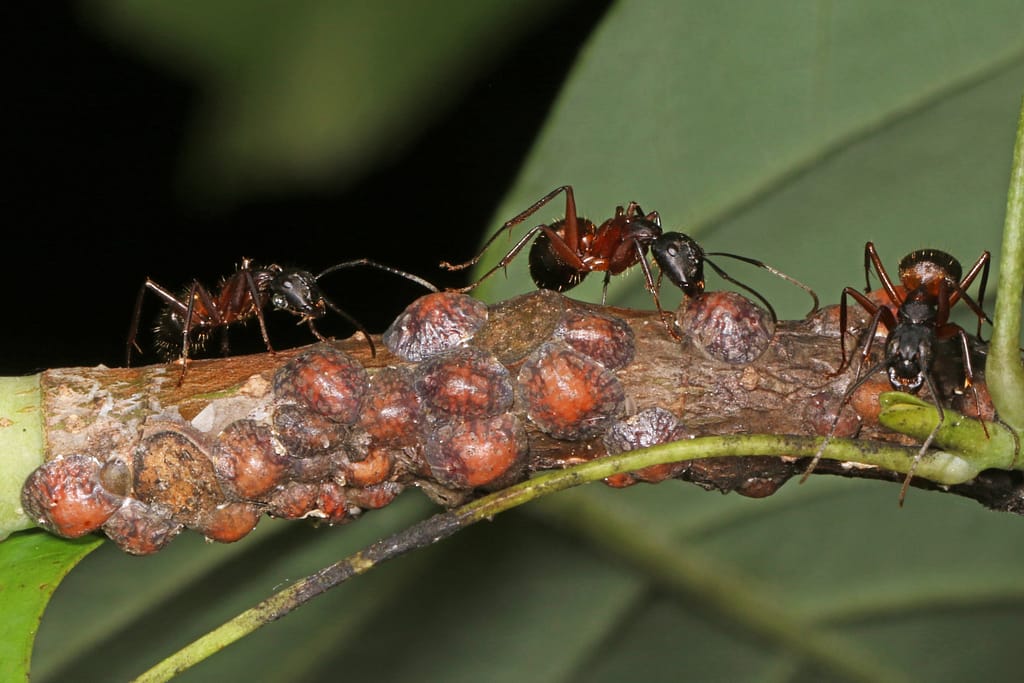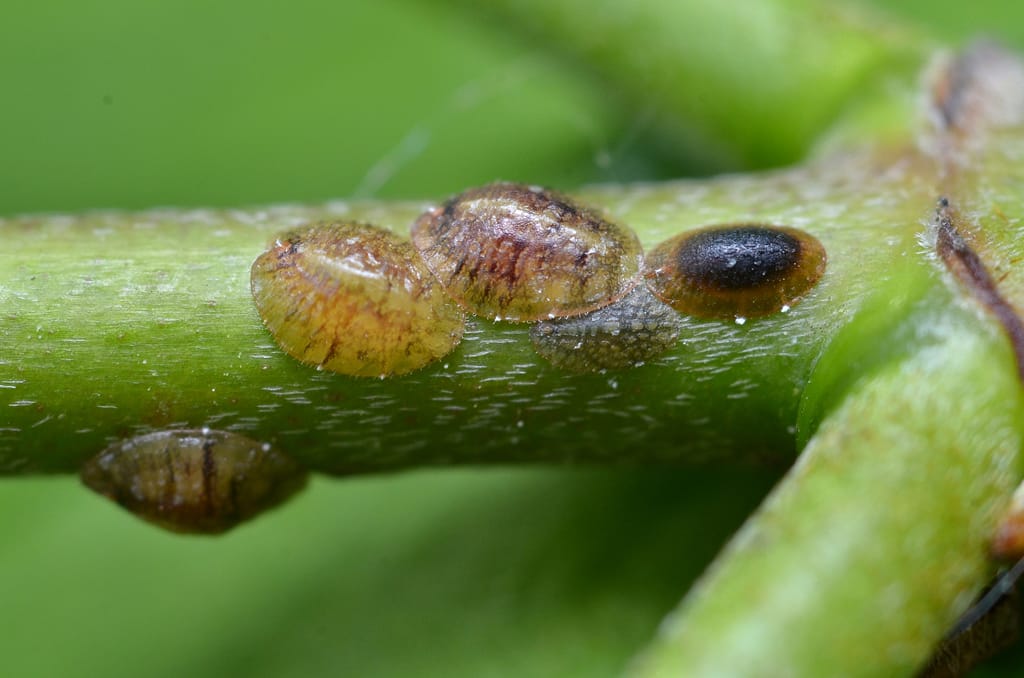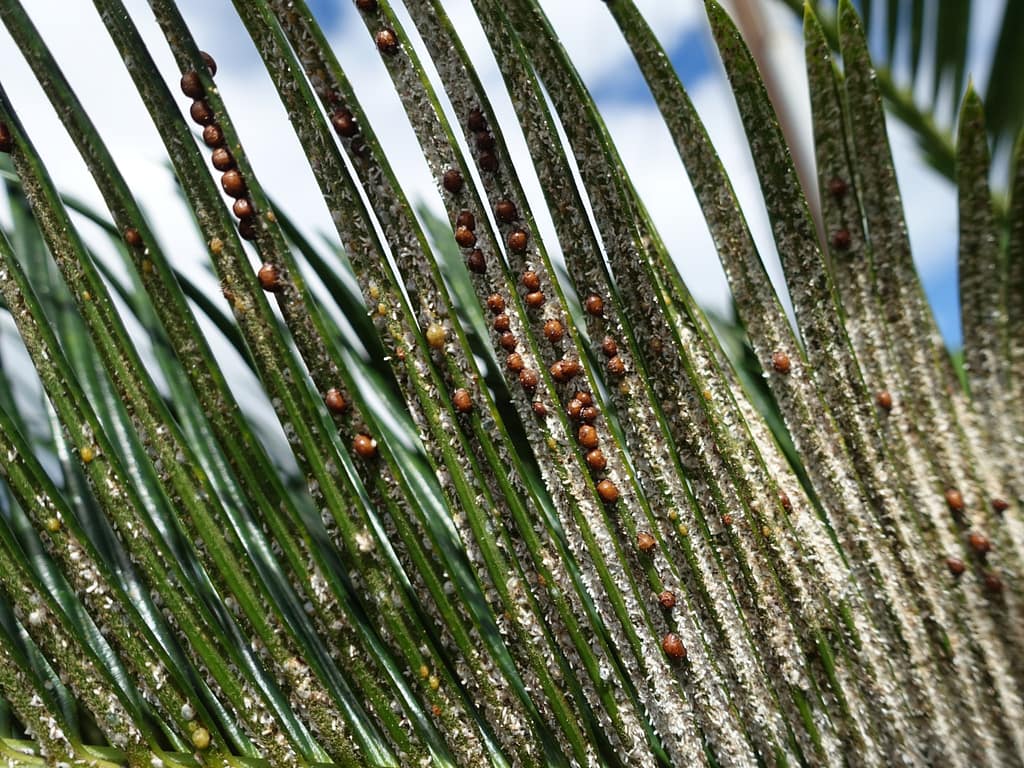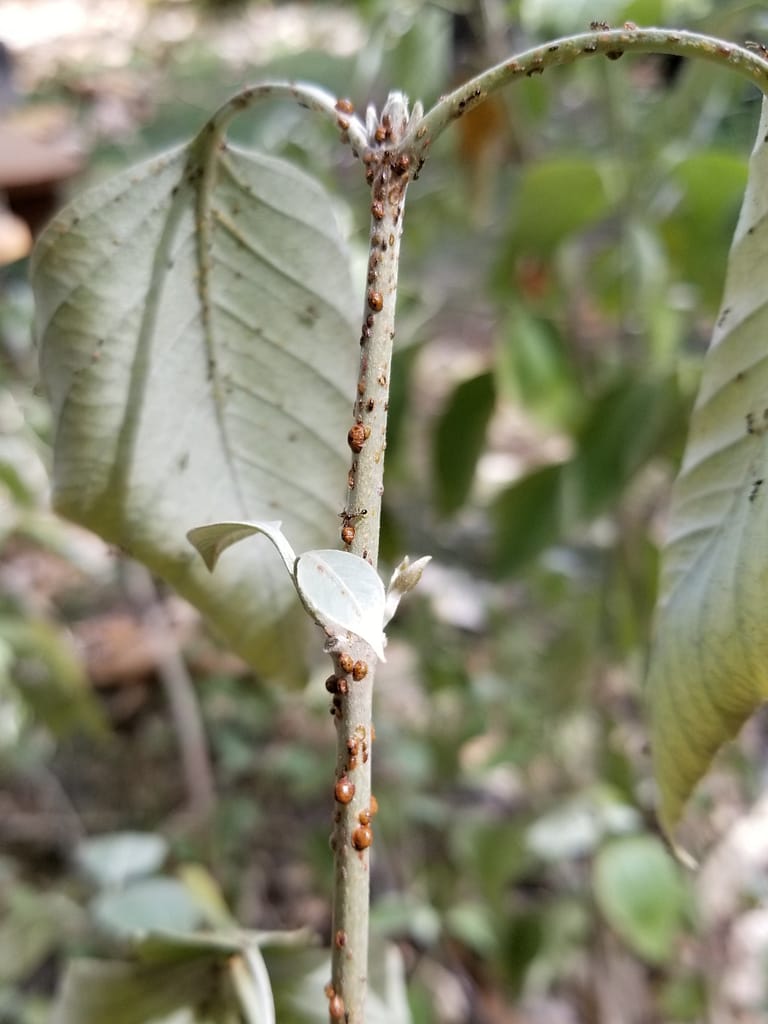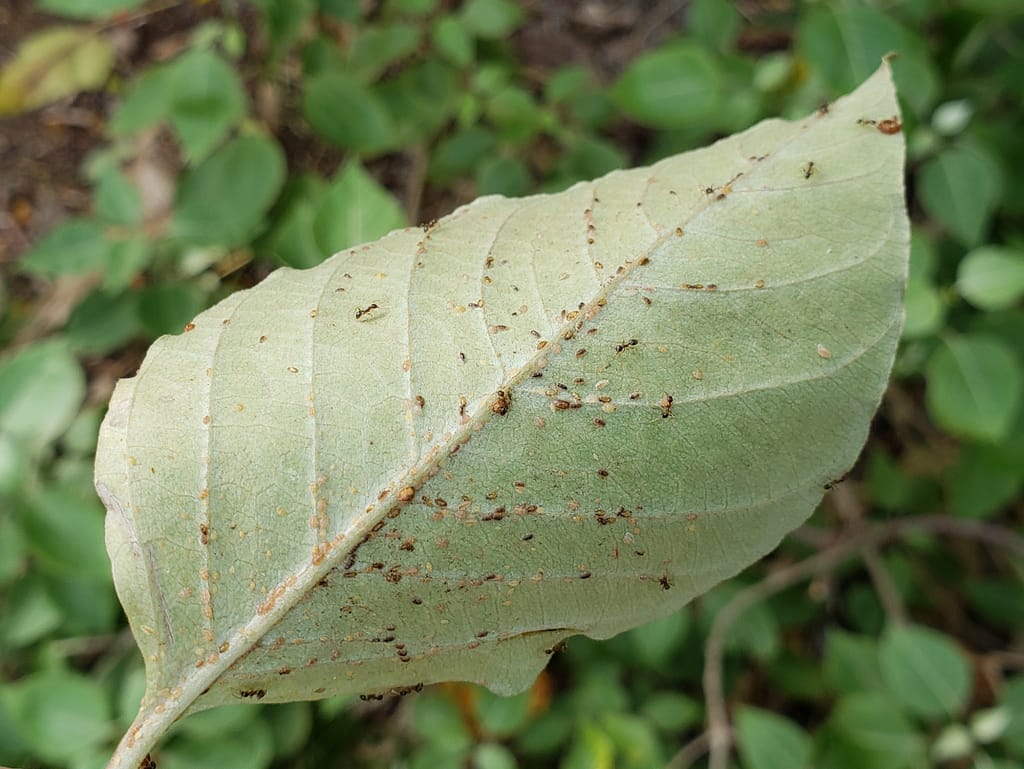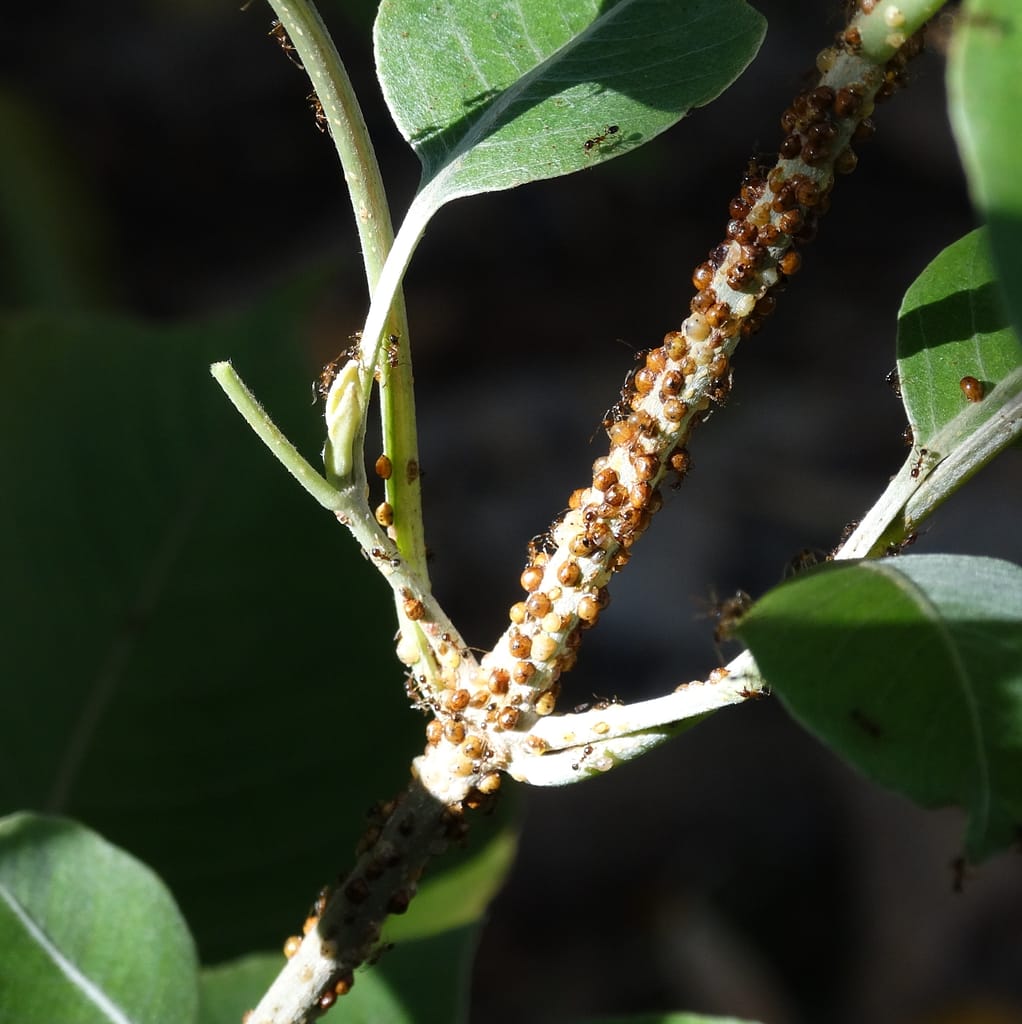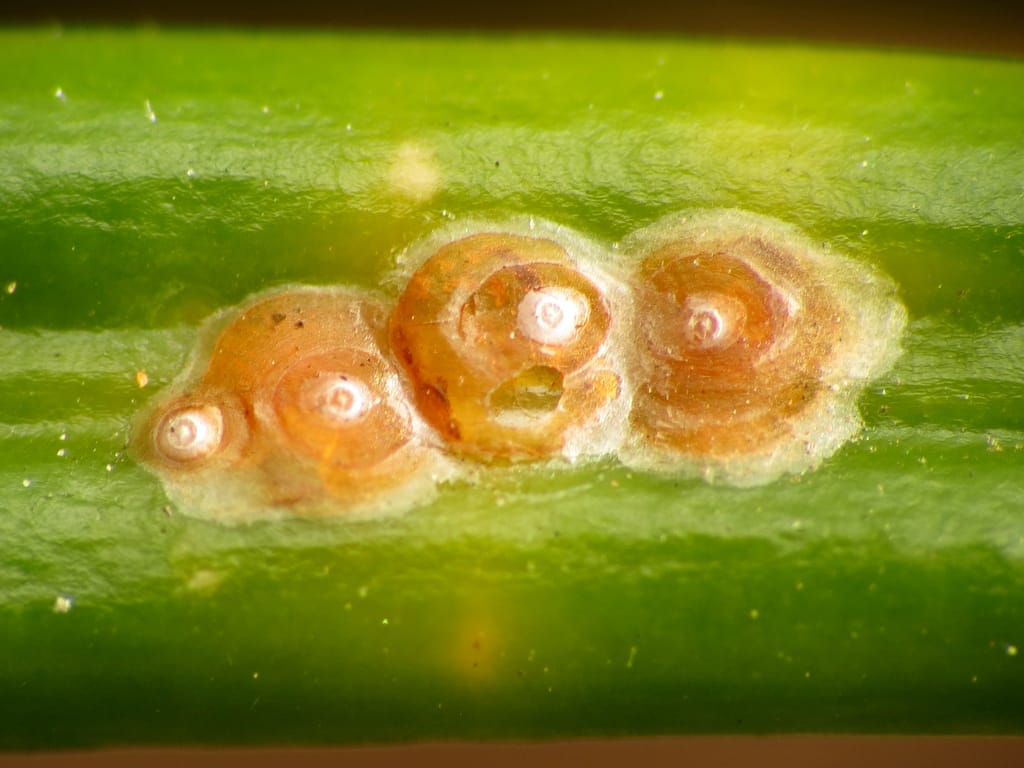What Is Scale?
Scale insects are small insects that have a waxy covering to protect themselves. Scale insects weaken trees, shrubs, and other plants through feeding on the sap of the plant. They are commonly identified by a shell like covering that conceals the insects body. There are two types of scale insects: Soft scales and hard scales
Symptoms and Identification of Scale
One of the best resources for scale identification is this compilation of insect photos that have a search function to help identify them: https://www.forestryimages.org/browse/Archivethumb.cfm?Arc=4
Some species of insects are known to look similar to scale insects, but are not. This list includes: California laurel aphid, coconut mealybug, cypress bark mealybug, palm aphid, lemongum lerp psyllid, redgum lerp psyllid, and diamond “scale”. For photos and scientific names on them you can read about them on UCANR IPM page here: http://ipm.ucanr.edu/PMG/PESTNOTES/pn7408.html
Symptoms of scale include the following:
- Honeydew – a sweet, sticky substance that attracts ants
- Yellowing or wilting of leaves (signs of water stress)
- Dead leaves with a scorched appearance
- Stunted growth or appearance
- Possible death of plant or of a section that is heavily infected
For images of plants with scale scroll to the bottom for help in identifying if it is affecting your plant. If you have photos you’d like to add to the photos below you can send them to [email protected].
Life Cycle
Adult female scale insects lay eggs underneath the scale covering that eventually hatch and produce little scale insects, or nymphs. The nymphs then crawl to a new suitible location, insert their sucker into the plant, and produce a protective shell. Once this happens, armored scale insects (hard scales) don’t move again on the plant and stay there until they die, while soft scales can continue to slowly move with the legs that they maintain throughout their life. Soft scales also have one generation per year, while hard scales can have multiple each year.
Management of Scale
Biological Control
Scale insects can generally be effectively managed through natural predators (parasitic wasps, various beetles, lacewings, mites, and ladybugs), adverse weather conditions that lower population, and mechanical removal by hand or pruning. If the population of scale insects remains low, no chemical treatment is necessary. Certain species of scale are less destructive than others and can be a factor (as can plant species susceptibility) when considering treatment. If the infestation gets out of control, chemical treatment can become a necessary option.
Cultural Control
Removing small amounts of scale by hand on small infestations or houseplants can be a practical solution. Heavily infested branches or leaves can be pruned off to help manage the population of scales and the damage to the plant.
In areas with hot summers (ya know, like the Mojave desert…) pruning to open up the canopy of a plant can help create a microclimate for the plant with increased airflow and sunlight that can cause scale mortality due to high temperatures.
Chemical Control
There are 3 types of chemical control for scale insects, dormant oil, systemic insecticides, and summer sprays.
- Dormant oil is applied prior to bud break in the early spring. This needs to be applied to all above ground plant parts to be an effective control method.
- Systemic insecticides are insecticides that are distributed through the plant via the plants circulatory system. These can be applied as a foliar spray, soil drench, or a soil injection underneath the infected plant. They affect the adult and nymph scale insects, and are less harmful than a spray that can drift and damage beneficial insect populations. Their downside is that they may not be effective on all scale insects on the plant (insects that are not currently producing honeydew or insects that are not on the leaves may not be affected).
- Summer sprays are applied when the crawling nymphs are active and susceptible (as the contact spray does not penetrate the protective covering). This time period is different for all areas. The timing can be estimated through several different methods (that are all imperfect):
- Spray at the average time eggs have hatched in your are based on local literature
- Monitoring the plant development of plants of the same species to use Phenology (the known influences of weather variations on plant and animal rhythms), which is not a great option for the average gardener…
- Visual inspection through shaking a branch above a white sheet of paper and then examining the paper, or you can put double sided tape around the branch and inspect the tape with a magnifying glass to see if any nymph insects get stuck on the tape.
Toxicity
As with almost all chemicals there is an associated toxicity rating for the active ingredients of different pesticides, fungicides, herbicides, and rodenticides. Here are a few places you can learn more about their toxicity with a table of their rating and what the rating means (first is the preferred):
http://pods.dasnr.okstate.edu/docushare/dsweb/Get/Document-3591/EPP-7457web.pdf
https://extension.psu.edu/toxicity-of-pesticides

